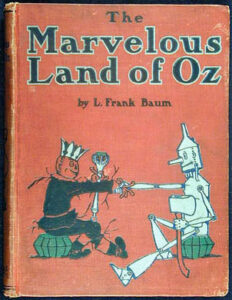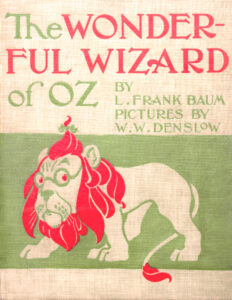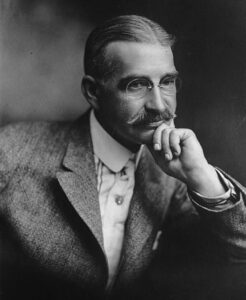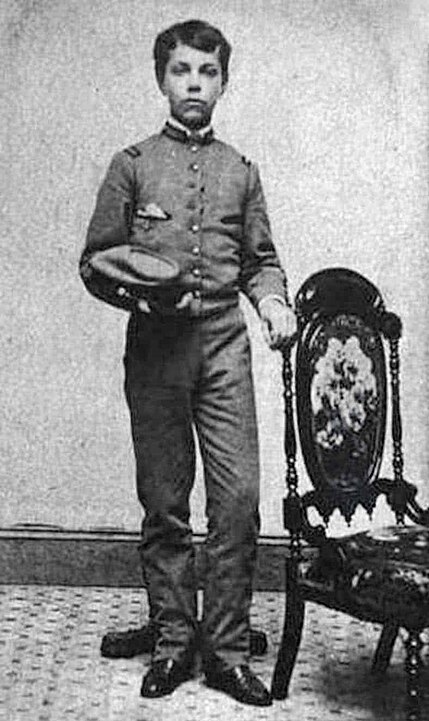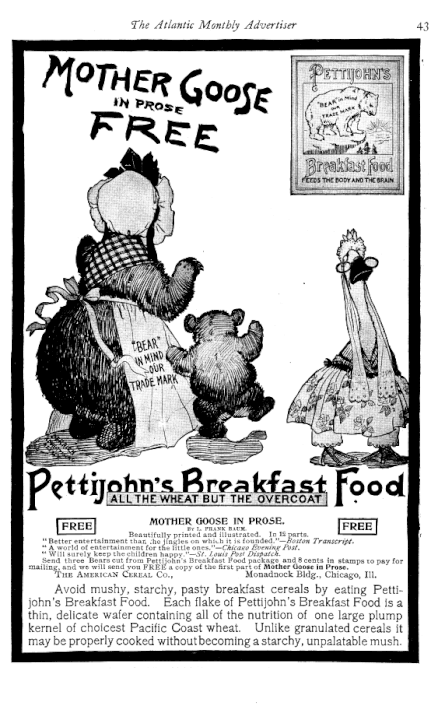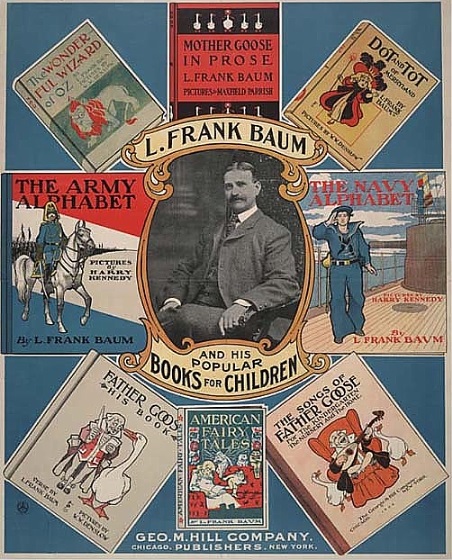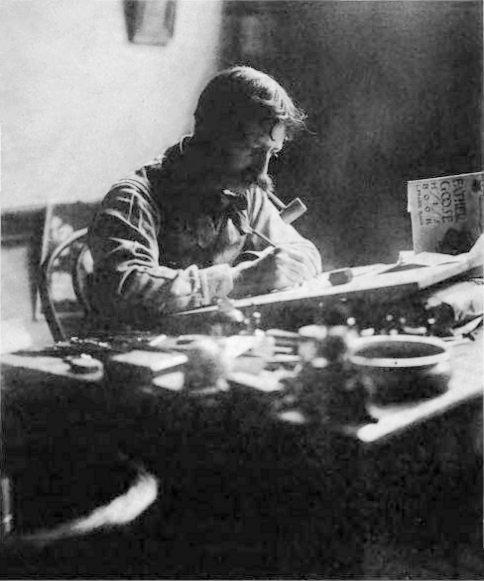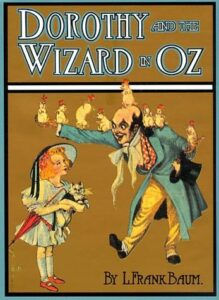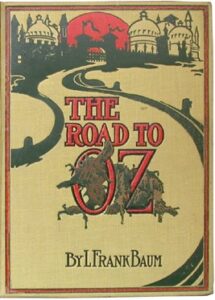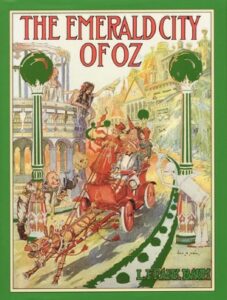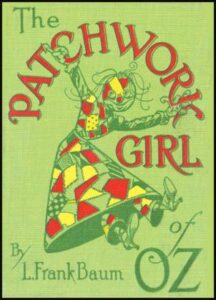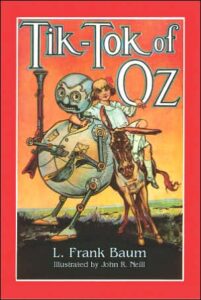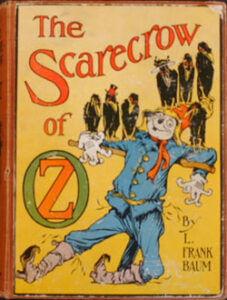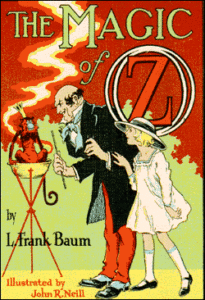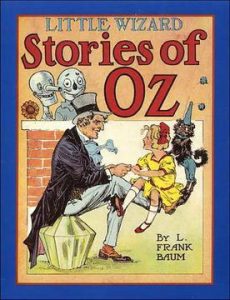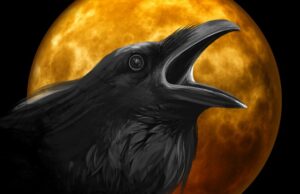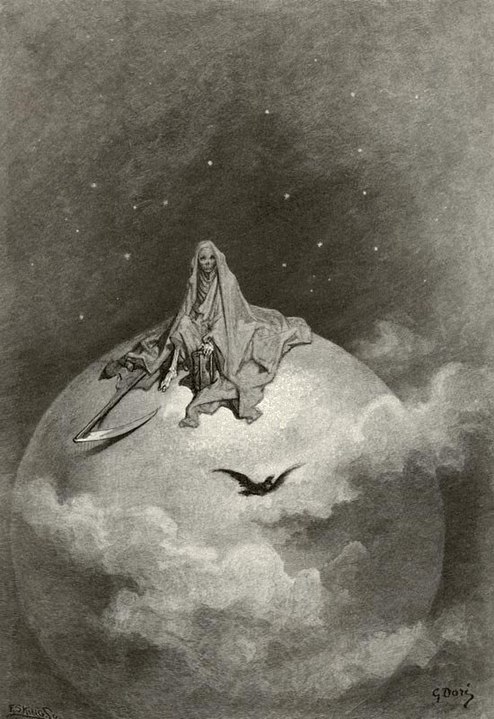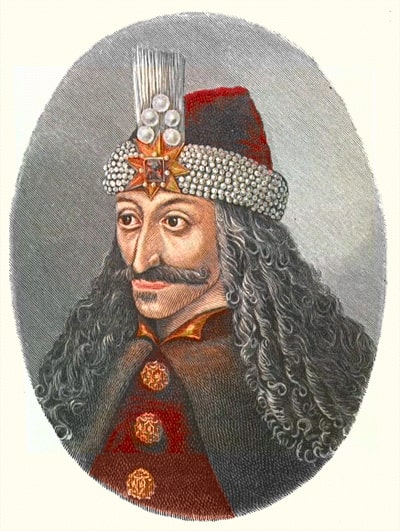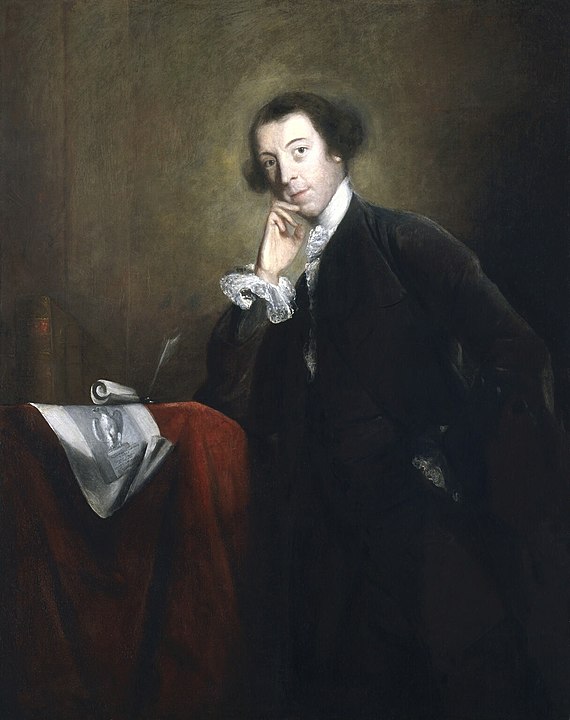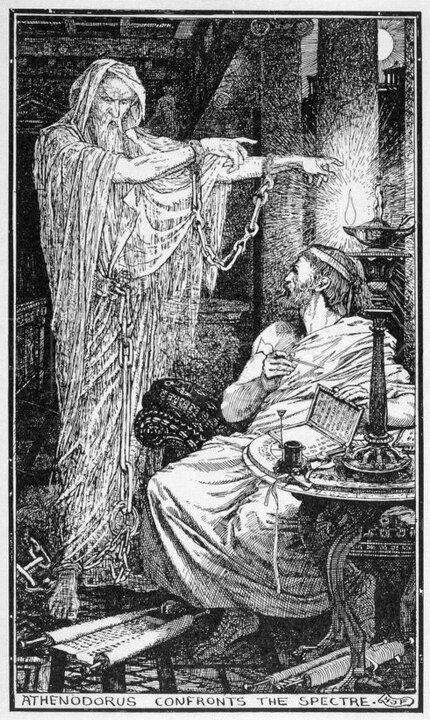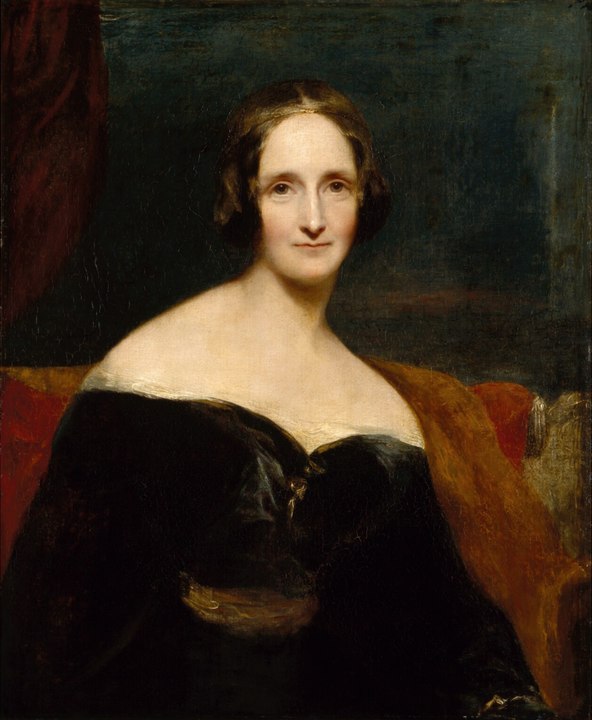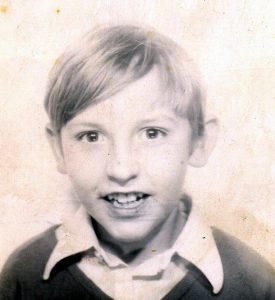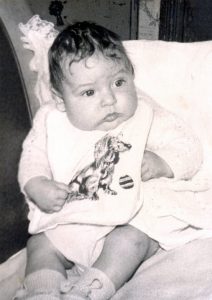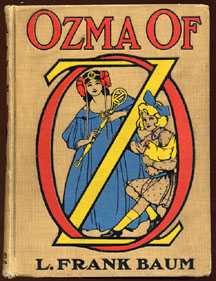
You can download this book and the thirteen other fantasy books in the Oz series by L. Frank Baum via Project Gutenberg by clicking here.
About The Ozma Of Oz
Ozma of Oz, published on July 30, 1907, was the official third book of L. Frank Baum’s Oz series. It was the first in which Baum was clearly intending a series of Oz books.
It is the first Oz book where the majority of the action takes place outside of the Land of Oz. Only the final two chapters take place in Oz itself. This reflects a subtle change in theme: in the first book, Oz is the dangerous land through which Dorothy must win her way back to Kansas; in the third, Oz is the end and aim of the book. Dorothy’s desire to return home is not as desperate as in the first book, and it is her uncle’s need for her rather than hers for him that makes her return.
The book was illustrated throughout in colour by artist John R. Neill. It bore the following dedication: “To all the boys and girls who read my stories – and especially to the Dorothys – this book is lovingly dedicated.”
The Plot
SPOILER ALERT: Skip this bit if you haven’t read the book and are planning to do so!
On an ocean voyage with her uncle Henry to Australia, Dorothy is blown into the sea by a storm. She takes refuge on a floating chicken-coop, which washes ashore, along with the coop and a hen in it. The hen is able to speak; Dorothy gives it the name Billina. Exploring the land, Dorothy and Billina are menaced by a tribe of brightly dressed “Wheelers”, who have wheels instead of hands and feet. They also find a clockwork man named Tik-Tok (one of the first intelligent humanoid automatons in literature), who joins them.
Tik-Tok informs Dorothy and Billina that they are in the Land of Ev, which currently has no competent ruler, its king having committed suicide after selling his family to the Nome King. The three visit the castle of Princess Langwidere, who has many exchangeable, detachable heads. When Dorothy refuses to let Langwidere take her head and add it to her collection, Langwidere has a tantrum and locks Dorothy in a high tower within the palace.
Luckily, Princess Ozma and her Royal Court of Oz (many of whom appeared in the two previous Oz books) just happen to cross over the Deadly Desert on a mission to free the royal family from the Nome King. Upon arriving, Ozma takes charge and has Dorothy, Billina and Tik-Tok released from Langwidere’s custody. The three join Ozma’s expedition to the Kingdom of the Nomes.
When they arrive, the Nome King reveals that he has magically transformed the royal family into decor ornaments. When Ozma asks him to release them, he offers a bargain: the Oz people may enter his chambers and try to guess which of the Nome King’s many ornaments they are, but if they fail to guess correctly, they will also become ornaments themselves. Ozma, the twenty-seven soldiers of the Royal Army of Oz, including the Scarecrow, the Tin Woodman, and Tik-Tok, all suffer this bizarre fate. Dorothy luckily selects one ornament which turns out to be one of the royal family’s young princes.
That night, Billina overhears the Nome King discussing his transformations with another Nome, and learns how to recognize, by colour, which ornaments are transformed people. She also learns that the King’s magic powers come from the Magic Belt that he wears. She is, therefore, able to free all the transformations. By exploiting the Nomes’ fear of eggs, the Oz people are able to capture the magic belt and escape the Nome Kingdom with the royal family of Ev.
After returning the royal family of Ev to their throne, Ozma, Dorothy, and the others finally return to the country of Oz where a great victory celebration is held in the Emerald City’s royal palace. Dorothy is officially made a Princess of Oz, Billina elects to remain in Oz, and Ozma uses the magic belt to send Dorothy to Kansas where she is happily reunited with her Uncle Henry.
Adaptations
L. Frank Baum revisited this story for the plot of his 1913 musical The Tik-Tok Man of Oz, starring James C. Morton and Fred Woodward. Aside from Tik-Tok, a princess named Ozma, and a visit to the Nome King’s domain, the similarities between the book and the finished play was minimal, allowing Baum to re-adapt the latter as the eighth Oz book, Tik-Tok of Oz, in 1914.
A theatrical adaptation called Ozma of Oz: A Tale of Time, written by Susan Zeder with music by Richard Gray premiered at the Poncho Theatre in Seattle, Washington, in 1979. On its 20th anniversary in 1999, it was revived with the addition of further songs and titled, Time Again in Oz.
Elements from Ozma of Oz and the previous novel, The Marvelous Land of Oz, were incorporated into the 1985 film Return to Oz, featuring Fairuza Balk as Dorothy. Although most of the plot was taken from Ozma, the action was chiefly relocated to the derelict Emerald City, ruled by Princess Mombi (Princess Langwidere in all but name, as well as keeping Ozma as her slave) and her Wheelers. In the second half of the film, Dorothy, Billina, Tik-Tok, Jack Pumpkinhead, and the Gump travelled to the Nome King’s mountain, to rescue the Scarecrow from the King’s ornament collection, which was emerald green, unlike the book’s royal purple. Drawn from the 1939 film The Wizard of Oz’s famous ruby slippers were used in place of the magic belt.
Read more about Adaptions and Ozma Of Oz here.
The above articles were sourced from Wikipedia and are subject to change.
Blog Posts
Books: The Oz Series By L. Frank Baum.
Books: The Wonderful Wizard Of Oz By L. Frank Baum.
Books: The Marvelous Land Of Oz By L. Frank Baum.
Books: Dorothy And The Wizard In Oz By L. Frank Baum.
Books: The Road To Oz By L. Frank Baum.
Books: The Emerald City Of Oz By L. Frank Baum.
Books: The Patchwork Girl Of Oz By L. Frank Baum.
Books: Tik-Tok Of Oz By L. Frank Baum.
Books: The Scarecrow Of Oz By L. Frank Baum.
Books: Rinkitink In Oz By L. Frank Baum.
Books: The Lost Princess Of Oz By L. Frank Baum.
Books: The Tin Woodman Of Oz By L. Frank Baum.
Books: The Magic Of Oz By L. Frank Baum.
Books: Glinda Of Oz By L. Frank Baum.
Books: Queer Visitors From The Marvelous Land Of Oz By L. Frank Baum.
Books: The Woggle-Bug Book By L. Frank Baum.
Notes And Links
The 1907 first edition front cover image shown at the top of this page is © John R. Neill and is in the Public Domain via Wikipedia.
Project Gutenberg – Project Gutenberg is an online library of free e-books and was the first provider of free electronic books. Michael Hart, the founder of Project Gutenberg, invented e-books in 1971 and his memory continues to inspire the creation of them and related content today.
The Wonderful Wiki of Oz – Official website. A wonderful and welcoming encyclopedia of all things Oz that anyone can edit or contribute Oz-related information and Oz facts to enjoy.
The Oz Archive on Facebook – Archiving and celebrating the legacy of Oz.
The Oz Archive on Twitter – Archiving and celebrating the legacy of Oz.
The Oz Archive on Instagram – Archiving and celebrating the legacy of Oz.
The Oz Archive on TikTok – Archiving and celebrating the legacy of Oz.
